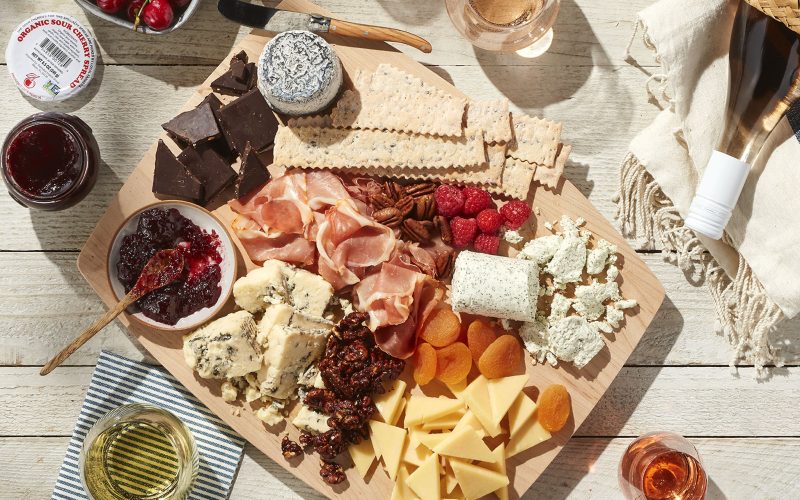Picture this: You’re hosting a gathering of friends or family, and you want to impress them with an exquisite yet effortless culinary creation. Enter the cheese board, a masterpiece of flavors, textures, and visual appeal. In this blog, we’ll delve into the art of creating the perfect cheese board that will leave your guests in awe. From selecting the finest cheeses to pairing them with complementary elements, we’ll explore how to craft a cheese board that’s as much a feast for the eyes as it is for the palate.
1. The Foundation: Cheese Selection
The heart and soul of any cheese board is, of course, the cheese itself. When choosing your cheeses, aim for a variety of textures, flavors, and milk types. A good rule of thumb is to include three to five different cheeses. Here are some classic choices:
- Hard Cheeses: Consider classics like aged cheddar, Manchego, or Gouda. These cheeses offer a firm texture and a pronounced, robust flavor.
- Soft Cheeses: Brie, Camembert, or a creamy goat cheese are ideal for adding a luscious, creamy component to your board.
- Blue Cheeses: The bold, tangy notes of blue cheese, such as Roquefort, Gorgonzola, or Stilton, provide a delightful contrast to milder options.
- Washed-Rind Cheeses: For a more pungent and complex addition, choose cheeses like Taleggio or Epoisses.
- Fresh Cheeses: Include a fresh, mild option like mozzarella or ricotta for a refreshing palate cleanser.
- Pairing Perfection: Accompaniments
Cheese doesn’t stand alone on a cheese board. The right accompaniments can elevate your creation to new heights. Some popular choices include:
- Bread and Crackers: Opt for a mix of baguette slices, artisanal crackers, and breadsticks to provide a crispy contrast to the cheeses.
- Fresh Fruits: Grapes, sliced pears, and figs add a natural sweetness that complements the cheese. The vibrant colors also enhance the visual appeal of your board.
- Nuts: A selection of roasted nuts, such as almonds, walnuts, or pecans, provide a delightful crunch and pair wonderfully with cheese.
- Condiments: Add a few jars of honey, fruit preserves, or chutney for a sweet and tangy twist. Dijon mustard and olives are also great options.
- Cured Meats: If you’re inclined to include meats, thinly sliced prosciutto, salami, or chorizo make excellent partners for cheese.
- Pickled Vegetables: Cornichons, pickled onions, or pickled jalapeños can balance the richness of the cheeses with a hint of acidity.
- Aesthetics and Presentation
Now, let’s talk about the visual aspect of your cheese board. Creating an eye-catching display is just as important as selecting the right ingredients. Here are some tips:
- Use a Quality Board: Start with a wooden or marble cheese board, slate, or even a simple serving platter as your canvas. The choice of your board can add an elegant touch to the presentation.
- Arrangement: Begin by placing your cheeses evenly around the board. Fan out slices of bread and crackers, and then add fruits, nuts, and other accompaniments in clusters. Play with colors and textures for a visually pleasing effect.
- Garnish: Fresh herbs, such as rosemary or thyme, can be used as a fragrant garnish. Edible flowers, like nasturtiums, add an extra touch of elegance.
- Labeling: Consider labeling your cheeses to guide your guests in their exploration of the board. Small chalkboard signs or paper labels can do the trick.
Conclusion
The art of crafting the perfect cheese board is a delightful combination of flavors, textures, and presentation. With a well-curated selection of cheeses, thoughtfully chosen accompaniments, and careful attention to aesthetics, you can create a culinary masterpiece that will leave your guests impressed. Whether you’re hosting a formal event or a casual gathering, a well-assembled cheese board is sure to be a crowd-pleaser, showcasing your creativity and culinary prowess. So, go ahead and embark on this journey of gastronomic delight, and let your cheese board be the centerpiece of your next gathering.
